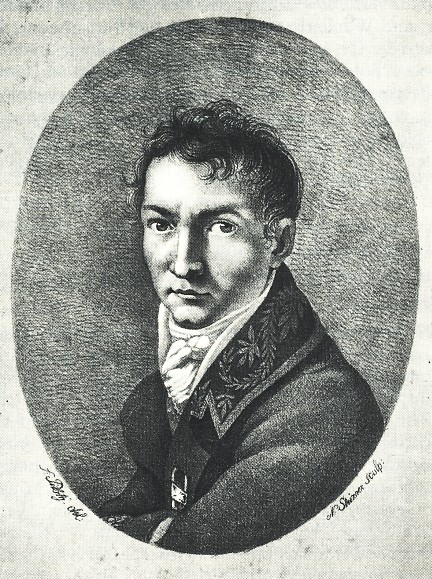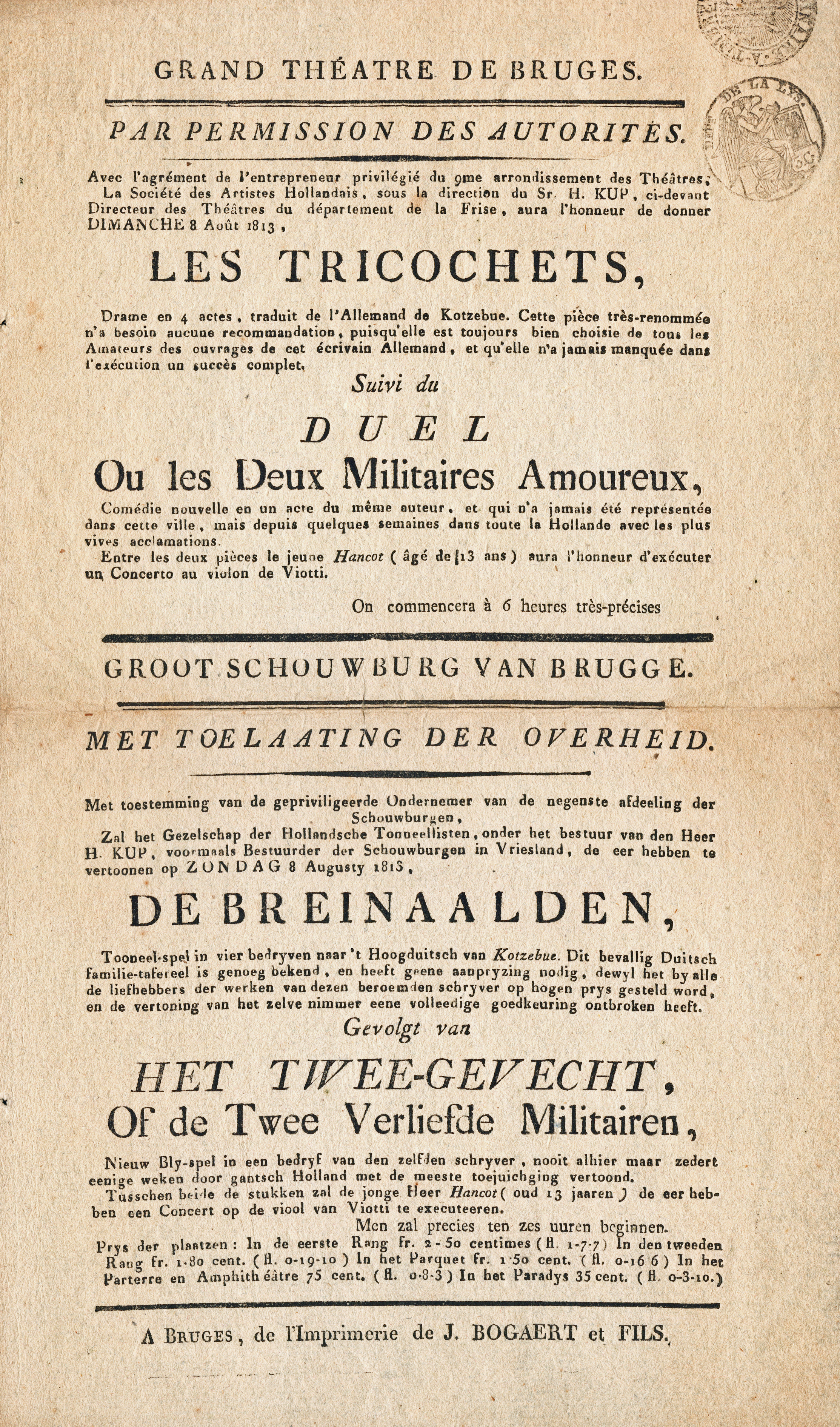|
Brunonian System Of Medicine
The Brunonian system of medicine is a theory of medicine which regards and treats disorders as caused by defective or excessive excitation. It was developed by the Scottish physician John Brown and is outlined in his 1780 publication ''Elementa Medicinae''. It drew on the theories of his teacher William Cullen, but whereas Cullen set out to create a systematic nosology of diseases, Brown argued for a unified model in which all disease was related to stimulation. Although Brown's theory never became very popular in Britain, it had temporary success in America, Italy, and the German-speaking part of Europe. Life of John Brown John Brown was born in 1735 and died in 1788, not very long after having written his master work, ''Elementa Medicinae'' (Elements of Medicine) in 1780. He was apparently studied to be a clergyman, but then studied medicine at Edinburgh University, and received his degree at St Andrew's. He commenced his medical practice in Edinburgh, but opposition to ... [...More Info...] [...Related Items...] OR: [Wikipedia] [Google] [Baidu] |
Medicine
Medicine is the science and practice of caring for a patient, managing the diagnosis, prognosis, prevention, treatment, palliation of their injury or disease, and promoting their health. Medicine encompasses a variety of health care practices evolved to maintain and restore health by the prevention and treatment of illness. Contemporary medicine applies biomedical sciences, biomedical research, genetics, and medical technology to diagnose, treat, and prevent injury and disease, typically through pharmaceuticals or surgery, but also through therapies as diverse as psychotherapy, external splints and traction, medical devices, biologics, and ionizing radiation, amongst others. Medicine has been practiced since prehistoric times, and for most of this time it was an art (an area of skill and knowledge), frequently having connections to the religious and philosophical beliefs of local culture. For example, a medicine man would apply herbs and say prayers for healing, o ... [...More Info...] [...Related Items...] OR: [Wikipedia] [Google] [Baidu] |
Andreas Röschlaub
Andreas Röschlaub (21 October 1768 – 7 July 1835) was a German physician born in Lichtenfels, Bavaria. He studied medicine at the Universities of Würzburg and Bamberg, gaining his doctorate at the latter institution in 1795. In 1798 he became a full professor of pathology at Bamberg, and in 1802 transferred to the University of Landshut, where he was director of the medical school. In 1826 he relocated to the University of Munich as a professor of medicine. He died on 7 July 1835 during a recreational trip to Ulm. Röschlaub is remembered for development of the ''Erregbarkeitstheorie'' (excitability theory), which was a modification of Brownianism, a speculative theory of medicine that was initially formulated by Scottish physician John Brown (1735–1788). He was editor of ''Magazin zur Vervollkommnung der theoretischen und praktischen Heilkunde'' (Magazine for the Perfection of Theoretical and Practical Medicine), and the author of a textbook on classification of disease ... [...More Info...] [...Related Items...] OR: [Wikipedia] [Google] [Baidu] |
Carl Reinhold August Wunderlich
Carl Reinhold August Wunderlich (4 August 1815, Sulz am Neckar – 25 September 1877, Leipzig) was a German physician, pioneer psychiatrist, and medical professor. He is known for his measurement of mean normal human body temperature of 37 °C (98.6 °F), now known more accurately to be about 36.8 °C (98.2 °F). He attended grammar school in Stuttgart and at the age of eighteen he began his medical studies at University of Tübingen, where he completed his final exams in 1837. In 1838 he worked as assistant at St Catharine's Hospital in Stuttgart, and wrote his MD thesis. Two years later he wrote his MD habilitation on internal medicine at University of Tübingen. In 1846, he was appointed Professor (ordentlicher Professor) and head of the general hospital at Tübingen. He moved to Leipzig University as Professor and Medical Director of the university hospital four years later. There he introduced clinical pedagogy, combined with a rigorous methodolo ... [...More Info...] [...Related Items...] OR: [Wikipedia] [Google] [Baidu] |
Metternich
Klemens Wenzel Nepomuk Lothar, Prince of Metternich-Winneburg zu Beilstein ; german: Klemens Wenzel Nepomuk Lothar Fürst von Metternich-Winneburg zu Beilstein (15 May 1773 – 11 June 1859), known as Klemens von Metternich or Prince Metternich, was a conservative Austrian statesman and diplomat who was at the center of the European balance of power known as the Concert of Europe for three decades as the Austrian Empire's foreign minister from 1809 and Chancellor from 1821 until the liberal Revolutions of 1848 forced his resignation. Born into the House of Metternich in 1773 as the son of a diplomat, Metternich received a good education at the universities of Strasbourg and Mainz. Metternich rose through key diplomatic posts, including ambassadorial roles in the Kingdom of Saxony, the Kingdom of Prussia, and especially Napoleonic France. One of his first assignments as Foreign Minister was to engineer a détente with France that included the marriage of Napoleon to the Austria ... [...More Info...] [...Related Items...] OR: [Wikipedia] [Google] [Baidu] |
August Von Kotzebue
August Friedrich Ferdinand von Kotzebue (; – ) was a German dramatist and writer who also worked as a consul in Russia and Germany. In 1817, one of Kotzebue's books was burned during the Wartburg festival. He was murdered in 1819 by Karl Ludwig Sand, a militant member of the ''Burschenschaften''. This murder gave Metternich the pretext to issue the Carlsbad Decrees of 1819, which dissolved the ''Burschenschaften'', cracked down on the liberal press, and seriously restricted academic freedom in the states of the German Confederation. Life Kotzebue was born in Weimar to the respected merchant Kotzebue family and was educated at Wilhelm-Ernst- Gymnasium in Weimar, where his uncle, the writer and critic Johann Karl August Musäus was among his teachers. In 1776 the young Kotzebue acted alongside Goethe in the latter's play ''Die Geschwister'' when it premiered in Weimar. In 1777, aged sixteen, he enrolled at the University of Jena to study legal science. He continued his stud ... [...More Info...] [...Related Items...] OR: [Wikipedia] [Google] [Baidu] |
William Osler
Sir William Osler, 1st Baronet, (; July 12, 1849 – December 29, 1919) was a Canadian physician and one of the "Big Four" founding professors of Johns Hopkins Hospital. Osler created the first Residency (medicine), residency program for specialty training of physicians, and he was the first to bring medical students out of the lecture hall for bedside clinical training. He has frequently been described as the ''Father of Modern Medicine'' and one of the "greatest diagnosticians ever to wield a stethoscope". Osler was a person of many interests, who in addition to being a physician, was a bibliophile, historian, author, and renowned practical joker. Outside of medicine, he was passionate about medical libraries and medical history and among his achievements were the founding of the History of Medicine Society (formally "section"), at the Royal Society of Medicine, London. In the field of librarianship he was instrumental in founding the Medical Library Association of Great Brit ... [...More Info...] [...Related Items...] OR: [Wikipedia] [Google] [Baidu] |
Romantic Medicine
Romantic medicine is part of the broader movement known as Romanticism, most predominant in the period 1800–1840, and involved both the cultural (humanities) and natural sciences, not to mention efforts to better understand man within a spiritual context ('spiritual science'). Romanticism in medicine was an integral part of Romanticism in science. :Romantic writers were far better read in medicine than we tend to remember: Byron consulted popular health manuals by Adair and Solomon; Coleridge read deeply in his physician, James Gillman's, library; Percy Shelley ordered Spallanzani's complete works and immersed himself in the vitalist controversy, while Mary Shelley read Gall and Spurzheim; Blake engraved plates for medical literature published by Joseph Johnson; and Keats, of course, was trained as a physician. The impetus for Romantic ideas in medicine came from the Great Britain, and more specifically Scotland - John Hunter (1728–93) - and the idea of life as a principle not ... [...More Info...] [...Related Items...] OR: [Wikipedia] [Google] [Baidu] |
Samuel Taylor Coleridge
Samuel Taylor Coleridge (; 21 October 177225 July 1834) was an English poet, literary critic, philosopher, and theologian who, with his friend William Wordsworth, was a founder of the Romantic Movement in England and a member of the Lake Poets. He also shared volumes and collaborated with Charles Lamb, Robert Southey, and Charles Lloyd. He wrote the poems ''The Rime of the Ancient Mariner'' and ''Kubla Khan'', as well as the major prose work ''Biographia Literaria''. His critical work, especially on William Shakespeare, was highly influential, and he helped introduce German idealist philosophy to English-speaking cultures. Coleridge coined many familiar words and phrases, including "suspension of disbelief". He had a major influence on Ralph Waldo Emerson and American transcendentalism. Throughout his adult life, Coleridge had crippling bouts of anxiety and depression; it has been speculated that he had bipolar disorder, which had not been defined during his lifetime.Jamis ... [...More Info...] [...Related Items...] OR: [Wikipedia] [Google] [Baidu] |
Excitation
Excitation, excite, exciting, or excitement may refer to: * Excitation (magnetic), provided with an electrical generator or alternator * Excite Ballpark, located in San Jose, California * Excite (web portal), web portal owned by IAC * Electron excitation, the transfer of an electron to a higher atomic orbital * ''Excitement'' (film), a lost 1924 silent comedy by Robert F. Hill * Sexual excitation * Stimulation or excitation or excitement, the action of various agents on nerves, muscles, or a sensory end organ, by which activity is evoked * "Exciting", a song by Hieroglyphics from the album ''The Kitchen'' See also * Anticipation (emotion) * Anxiety * Endorphins * Excitatory postsynaptic potential * Excited (other) * Excited state, of an atom, molecule or nucleus * Exciter (other) * Pleasure * Psychomotor agitation Psychomotor agitation is a symptom in various disorders and health conditions. It is characterized by unintentional and purposeless motions a ... [...More Info...] [...Related Items...] OR: [Wikipedia] [Google] [Baidu] |
Thomas Beddoes
Thomas Beddoes (13 April 176024 December 1808) was an English physician and scientific writer. He was born in Shifnal, Shropshire and died in Bristol fifteen years after opening his medical practice there. He was a reforming practitioner and teacher of medicine, and an associate of leading scientific figures. He worked to treat tuberculosis. Beddoes was a friend of Samuel Taylor Coleridge, and, according to E. S. Shaffer, an important influence on Coleridge's early thinking, introducing him to the higher criticism. The poet Thomas Lovell Beddoes was his son. A painting of him by Samson Towgood Roch is in the National Portrait Gallery, London. Early life and education Beddoes was born in Shifnal, Shropshire on April 13th, 1760 at Balcony House. He was educated at Bridgnorth Grammar School and Pembroke College, Oxford. He enrolled in the University of Edinburgh's medical course in the early 1780s. There he was taught chemistry by Joseph Black and natural history by Kendall Walke ... [...More Info...] [...Related Items...] OR: [Wikipedia] [Google] [Baidu] |
Encyclopædia Perthensis
The ''Encyclopædia Perthensis'' was a publishing project around the Morison Press in Perth, Scotland undertaken in the 1790s, with the involvement of James Morison. Morison went into partnership with Colin Mitchel and Co. Editions The ''Encyclopædia'' was issued in weekly instalments from 1796 to 1806, then republished in a 23 volume set in 1806. The first edition had the subtitle "Universal dictionary of knowledge, collected from every source and intended to supersede the use of all other English books of reference." Like the first edition, the second was originally issued in weekly instalments. These were issued from 1807 to 1816. In the last year the encyclopedia was issued as a 24 volume set, with the last volume being a supplement to the original text. The subtitle was changed to "Universal dictionary of the arts, sciences, literature, &c. intended to supersede the use of other books of reference." Content Most of the text was taken verbatim from the third edition of ... [...More Info...] [...Related Items...] OR: [Wikipedia] [Google] [Baidu] |





%2C_Portrait_miniature%2C1809.jpg)

